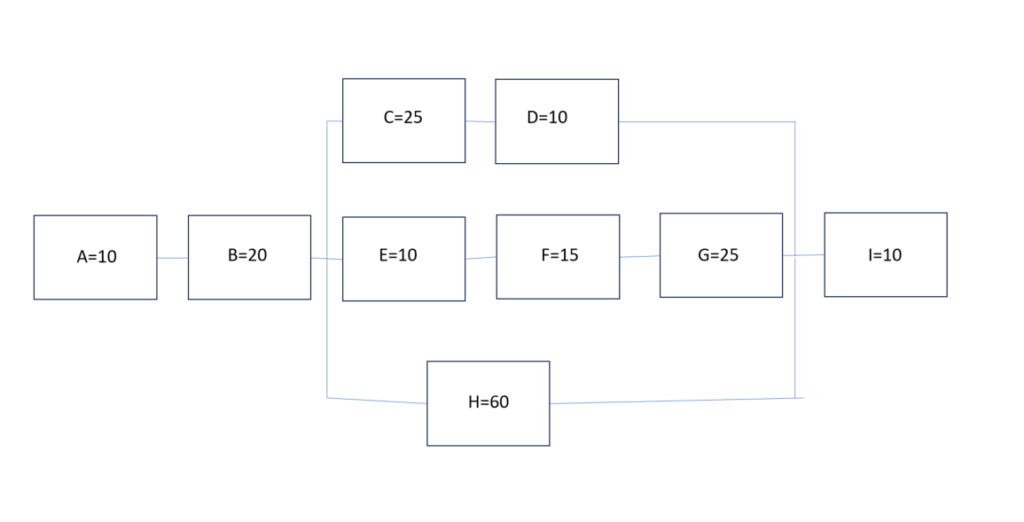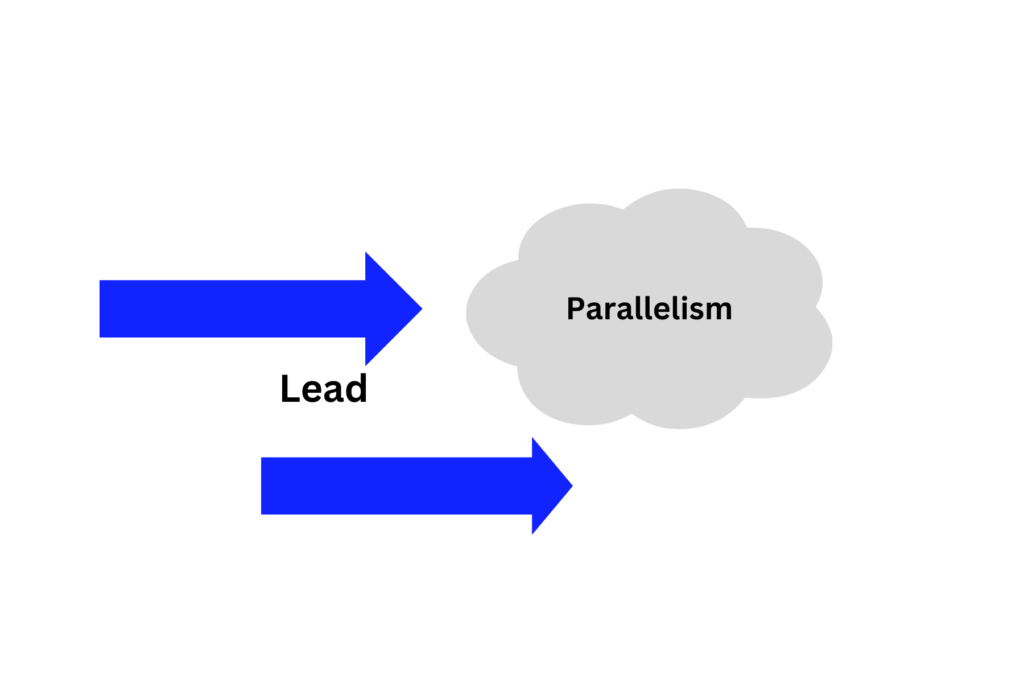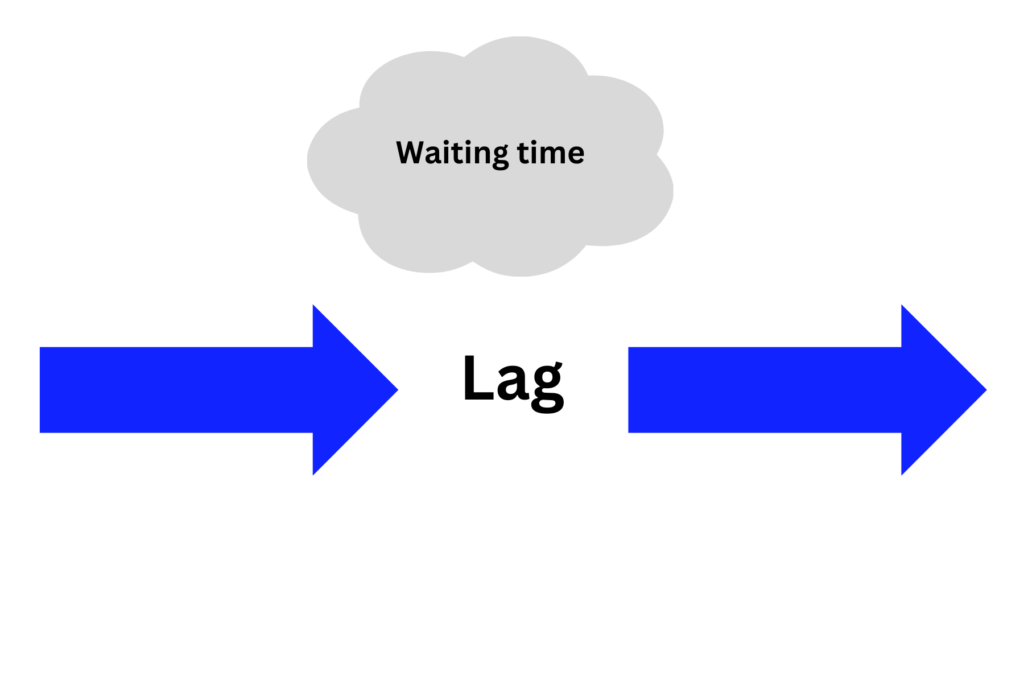Schedule development is a crucial phase in project management where the project schedule is created based on the activity lists, sequences, and duration estimates. Here are the steps involved in schedule development….
- Define Project Activities: Start by reviewing the activity lists created during the project planning phase. Ensure that all necessary activities are included and accurately described.
- Sequence Activities: Using techniques like the precedence diagram method (PDM) or the arrow diagramming method (ADM), establish the sequence in which activities must be performed. Identify dependencies between activities, such as finish-to-start, start-to-start, finish-to-finish, or start-to-finish relationships.
- Estimate Activity Durations: Use the duration estimates obtained from various estimation techniques (such as expert judgment, historical data, or three-point estimation) to determine how long each activity will take to complete. Consider factors like resource availability, constraints, and risks that may affect activity durations.
- Develop the Project Schedule: Once activity sequencing and duration estimation are complete, it’s time to develop the project schedule. This involves assigning start and finish dates to each activity based on their dependencies and durations.
- Critical Path Analysis: Identify the critical path, which is the longest sequence of activities that determines the shortest possible duration of the project. Activities on the critical path have zero float or slack, meaning any delay in these activities will directly impact the project’s overall duration.
- Resource Allocation: Allocate resources to activities based on their requirements and availability. Ensure that resources are assigned in a way that optimizes their utilization and minimizes conflicts or bottlenecks.
- Optimize the Schedule: Review the initial schedule to identify opportunities for optimization. Look for ways to shorten the critical path or adjust resource assignments to improve efficiency without compromising project objectives. (Fasttracking / Crashing)
- Schedule Baseline: Once the schedule is finalized, establish a baseline by documenting the approved project schedule. The baseline serves as a reference point for monitoring and controlling project progress throughout the execution phase.
- Schedule Management Plan: Develop a schedule management plan that outlines how the schedule will be monitored, updated, and communicated throughout the project lifecycle. Define roles and responsibilities, reporting mechanisms, and procedures for handling schedule changes or deviations.
- Schedule Compression or Fast-Tracking: In case of schedule delays or changes in project requirements, consider techniques like schedule compression (e.g., crashing or fast-tracking) to bring the project back on track without compromising quality or scope.
- Schedule Presentation: Present the finalized project schedule to stakeholders, team members, and other relevant parties to ensure alignment and understanding of project timelines and milestones.
By following these steps, project managers can develop a realistic and achievable project schedule that serves as a roadmap for successful project execution.
Critical path
Critical path is The longest path in the network or the Shortest possible time in which the project can be completed
The critical path in project management is the longest sequence of dependent tasks and activities that must be completed on time to ensure that the entire project is completed as planned. Activities on the critical path have zero float or slack, meaning any delay in these activities will directly impact the project’s overall duration.
Key characteristics of the critical path include:
- Longest Duration: The critical path represents the longest duration through the project network diagram, from the project’s start to its finish.
- Determines Project Duration: The total duration of the project is equal to the duration of the activities on the critical path. Any delays in activities along the critical path will cause delays in the overall project completion.
- No Float or Slack: Activities on the critical path have no flexibility in terms of their start or finish dates. Any delay in these activities will cause a delay in the project’s completion date unless corrective action is taken.
- Critical Path Analysis: Critical path analysis is a project management technique used to identify the critical path and analyze the relationships between tasks and activities. It helps project managers identify where to focus their efforts to ensure the project stays on schedule.
- Managing the Critical Path: Managing activities on the critical path is crucial for project success. Project managers often prioritize resources, allocate additional resources if necessary, and closely monitor progress to ensure activities on the critical path are completed on time.
Identifying the critical path is an essential aspect of project planning and scheduling, as it helps project managers allocate resources effectively, identify potential risks, and make informed decisions to keep the project on track for successful completion.
Float
Float, also known as slack, is the amount of time that a task or activity can be delayed without causing a delay to subsequent tasks or the overall project completion date. In other words, it represents the flexibility or cushion available within the schedule before it affects the project’s timeline.
There are two types of float:
- Total Float (TF): Total float is the amount of time that an activity can be delayed without delaying the project completion date. It is calculated as the difference between the late start date and the early start date, or between the late finish date and the early finish date of an activity. The formula for total float is:Total Float (TF) = Late Finish (LF) – Early Finish (EF) or Late Start (LS) – Early Start (ES). Total float can be positive, zero, or negative. A positive total float indicates that the activity can be delayed without affecting the project’s completion date, while zero or negative total float indicates that any delay in the activity will cause a delay to the project.
- Free Float (FF): Free float is the amount of time that an activity can be delayed without delaying the early start of any successor activity. It is calculated as the difference between the early start date of the successor activity and the early finish date of the current activity. The formula for free float is:Free Float (FF) = Early Start (ES) of Successor – Early Finish (EF) of Current Activity. Free float is always zero or positive. If an activity has free float, it means that it can be delayed without affecting the start of subsequent activities.
To arrive at float for each activity in the project schedule, you typically perform forward and backward pass calculations using techniques such as the Critical Path Method (CPM) or Precedence Diagramming Method (PDM). These calculations involve determining the early start (ES), early finish (EF), late start (LS), and late finish (LF) dates for each activity based on their dependencies, durations, and constraints.
Once the early and late dates for each activity are determined, you can calculate the total float and free float using the formulas mentioned above. Float analysis helps project managers identify activities that have flexibility in their schedules and prioritize resource allocation and scheduling decisions accordingly.
Forward pass and backward pass
The forward pass and backward pass are two fundamental calculations used in project scheduling to determine the earliest start (ES), earliest finish (EF), latest start (LS), and latest finish (LF) dates for each activity in the project network. These calculations are crucial for identifying the critical path, total float, and free float within the project schedule.
Forward Pass:
The forward pass is a technique used to calculate the earliest start (ES) and earliest finish (EF) dates for each activity in the project network. It starts from the beginning of the project and progresses forward through the network diagram, determining the earliest possible start and finish times for each activity based on its duration and the dependencies between activities.
The steps involved in the forward pass calculation are as follows:
- Begin with the first activity in the project network.
- Assign an early start (ES) date of zero to the first activity.
- Calculate the earliest finish (EF) date for the current activity by adding its duration to the early start date.
- For each successor activity connected to the current activity, update its early start (ES) date to the earliest finish (EF) date of the current activity if it represents a later start time.
- Repeat steps 3 and 4 for all remaining activities in the network, propagating forward through the network until the early start and early finish dates for all activities are determined.
At the end of the forward pass calculation, each activity will have an early start (ES) and earliest finish (EF) date, representing the earliest possible start and finish times for the activity given the project constraints.
Backward Pass:
The backward pass is a technique used to calculate the latest start (LS) and latest finish (LF) dates for each activity in the project network. It starts from the end of the project and progresses backward through the network diagram, determining the latest possible start and finish times for each activity without delaying the project completion.
The steps involved in the backward pass calculation are as follows:
- Begin with the last activity in the project network.
- Assign a late finish (LF) date equal to the project completion date to the last activity.
- Calculate the latest start (LS) date for the current activity by subtracting its duration from the late finish (LF) date.
- For each predecessor activity connected to the current activity, update its late finish (LF) date to the latest start (LS) date of the current activity if it represents an earlier finish time.
- Repeat steps 3 and 4 for all remaining activities in the network, propagating backward through the network until the latest start and latest finish dates for all activities are determined.
At the end of the backward pass calculation, each activity will have a latest start (LS) and latest finish (LF) date, representing the latest possible start and finish times for the activity without delaying the project completion.
By performing the forward pass and backward pass calculations, project managers can determine the critical path, total float, and free float within the project schedule, allowing them to effectively manage project timelines and resources.
At the end of the forward pass and backward pass, each activities early start (ES), late start (LS), early finish (EF) and late finish (LF) are determined. Then float or slack is calculated using the formula;
Float = LS-ES or LF-EF
Then we connect all the activities whose float=0, and that is the critical path
Activities on the critical path will have 0 float.

Near critical path
A near-critical path refers to a sequence of activities in a project network diagram that has a total float very close to zero, indicating that it is almost as critical as the actual critical path.
While the critical path represents the longest path through the project network diagram, where any delay in activities on this path will directly impact the project’s overall duration, near-critical paths are those paths that are very close in duration to the critical path.
Activities on near-critical paths have minimal flexibility in terms of their start or finish dates, similar to activities on the critical path. Although delays in activities on near-critical paths may not directly affect the project’s overall duration, they can still have a significant impact on the project’s timeline and may require close monitoring and management.
Identifying near-critical paths can help project managers identify additional areas of focus and prioritize resources to ensure that these paths are executed efficiently and effectively. By understanding the near-critical paths in a project, project managers can proactively manage risks and mitigate potential delays to maintain project timelines and meet project objectives.
Fasttracking and crashing
Fast tracking and crashing are project management techniques used to shorten project schedules and accelerate project completion. While these techniques can be applied to various types of projects, including EPC (Engineering, Procurement, and Construction) and IT (Information Technology) projects, their implementation and considerations may differ slightly based on the nature of the project.
Fast Tracking:
Fastracking – Trying to do things in parellel, which were originally scheduled sequentially
Fast tracking involves overlapping or executing certain project activities in parallel that would traditionally be performed sequentially. This technique aims to compress the project schedule by reducing the overall duration of the project. In the context of EPC and IT projects:
- EPC Projects: In EPC projects, fast tracking may involve initiating construction activities before the completion of detailed engineering or procuring certain materials before finalizing the design. For example, while the detailed engineering design for a facility is still underway, construction activities may begin based on preliminary design concepts or high-level specifications. However, fast tracking in EPC projects requires careful coordination and risk management to ensure that rework or conflicts between design and construction activities are minimized.
- IT Projects: In IT projects, fast tracking may involve overlapping phases such as requirements gathering, design, development, and testing. For example, while the requirements for a software system are still being finalized, the development team may begin working on early prototypes or mock-ups based on preliminary requirements. Fast tracking in IT projects requires effective communication and collaboration among project stakeholders to ensure that changes or updates to requirements are promptly incorporated into ongoing activities.
Crashing:
Crashing – Trying to reduce the duration of a task (compress) by adding more resources to it
Crashing involves allocating additional resources or increasing resource utilization to critical path activities to reduce their duration. This technique aims to shorten the project schedule by completing critical activities more quickly. In the context of EPC and IT projects:
- EPC Projects: In EPC projects, crashing may involve increasing the workforce or working additional shifts to accelerate construction activities. For example, to meet a tight deadline, additional construction crews may be hired, or work hours may be extended to expedite the completion of critical tasks such as site preparation or equipment installation. Crashing in EPC projects requires careful resource planning and management to ensure that increased resource utilization does not compromise safety, quality, or budget constraints.
- IT Projects: In IT projects, crashing may involve adding more developers or testers to critical development or testing activities. For example, to meet a project deadline, additional development teams may be brought in to work on coding tasks concurrently, or more testers may be allocated to perform comprehensive testing within a shorter timeframe. Crashing in IT projects requires effective coordination and integration of additional resources to ensure that project objectives are achieved without sacrificing software quality or stability.
In summary, while fast tracking and crashing can be effective strategies for accelerating project schedules in both EPC and IT projects, their implementation requires careful planning, coordination, and risk management to minimize potential impacts on project scope, quality, and budget.
Leads and lags
In project management, leads and lags are scheduling terms used to adjust the sequencing of activities in a project network diagram. They help in fine-tuning the relationships between tasks to optimize project schedules. Both EPC (Engineering, Procurement, and Construction) and IT (Information Technology) projects utilize leads and lags to manage dependencies and ensure smooth project execution.


Leads:
A lead allows a successor activity to start before its predecessor activity is complete. It represents an acceleration in the schedule, enabling tasks to overlap or start earlier than originally planned. In the context of EPC and IT projects:
- EPC Projects: Leads are commonly used in EPC projects to streamline construction activities. For example, a design review meeting might be scheduled before the completion of the entire design phase to identify and address potential issues early, thus expediting the overall project schedule.
- IT Projects: In IT projects, leads can be applied to accelerate development activities. For instance, coding for certain modules might begin before the entire design phase is finished, allowing developers to work on preliminary specifications while finalizing the overall system design.
Lags:
A lag, on the other hand, introduces a delay between the completion of a predecessor activity and the start of its successor activity. It represents a waiting period inserted into the project schedule. In the context of EPC and IT projects:
- EPC Projects: Lags are sometimes necessary in EPC projects to accommodate external factors or dependencies. For example, there may be a lag between the completion of site preparation and the start of construction to allow for regulatory approvals or environmental assessments.
- IT Projects: In IT projects, lags may be used to account for waiting periods or dependencies on external factors. For instance, there might be a lag between the completion of software development and the start of user acceptance testing (UAT) to allow stakeholders time to review the developed features.
Considerations:
When applying leads and lags in EPC and IT projects, it’s essential to consider the impact on project dependencies, resource allocation, and overall project schedule. While leads can help accelerate project timelines, they may introduce risks if activities start prematurely without sufficient preparation. Similarly, lags can provide flexibility but may also prolong project durations if not carefully managed.
In summary, leads and lags are valuable tools for adjusting task dependencies and optimizing project schedules in both EPC and IT projects. Project managers should carefully evaluate their use to ensure they align with project objectives and do not compromise project quality or efficiency.

